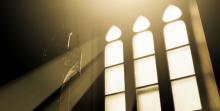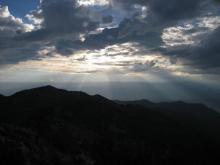Editorials
Editorial by Jim Greene
According to Webster’s Dictionary, “hope” has several connotations based on the way you approach the usage of the word. We can “hope” that something will happen—“I hope I can win a new car in the drawing.” Or, we can state with assurance that our “hope” is based on trust and reliance that something will happen—“Jesus is coming again!” The hymn, “We Have This Hope,” is a strong affirmation of our faith and hope in the coming of the Lord, based on the promises found in God’s Word. Every time I sing this song, my spirits are lifted, and I am inspired to share the good news that Jesus is coming again!
Editorial by Diane Gregg
One Sabbath Grandma dropped off her five grandchildren at church. She was familiar with the Seventh-day Adventist Church—and the Grafton (W.Va.) church, in particular—from visiting their food pantry and letting the children attend Vacation Bible School (VBS).
In addition to attending church services each week, the grandchildren participated in the summer Community Picnic and the Christmas program. One of the younger boys joined Adventurers. Whenever there was a social gathering, they were there, mainly because they were hungry. Each Sabbath they stayed for fellowship lunch and took a plate home for Grandma to eat.


 Editorial by Mike Hewitt
Editorial by Mike Hewitt
 Editorial by Ileana Santa Cruz-Espinosa
Editorial by Ileana Santa Cruz-Espinosa

 "Everyone, Everywhere” is the essence of Jesus’ command to “Go and make disciples of all nations.” Pennsylvania is included in the everywhere, but just who is everyone? The answer gets to the heart of our mission.
"Everyone, Everywhere” is the essence of Jesus’ command to “Go and make disciples of all nations.” Pennsylvania is included in the everywhere, but just who is everyone? The answer gets to the heart of our mission.